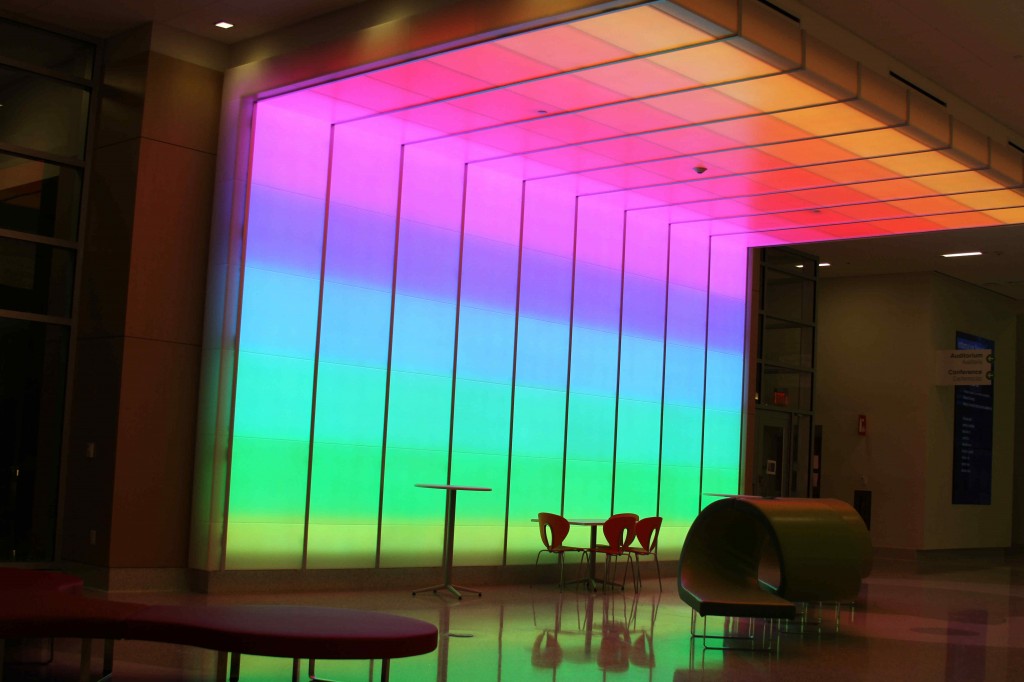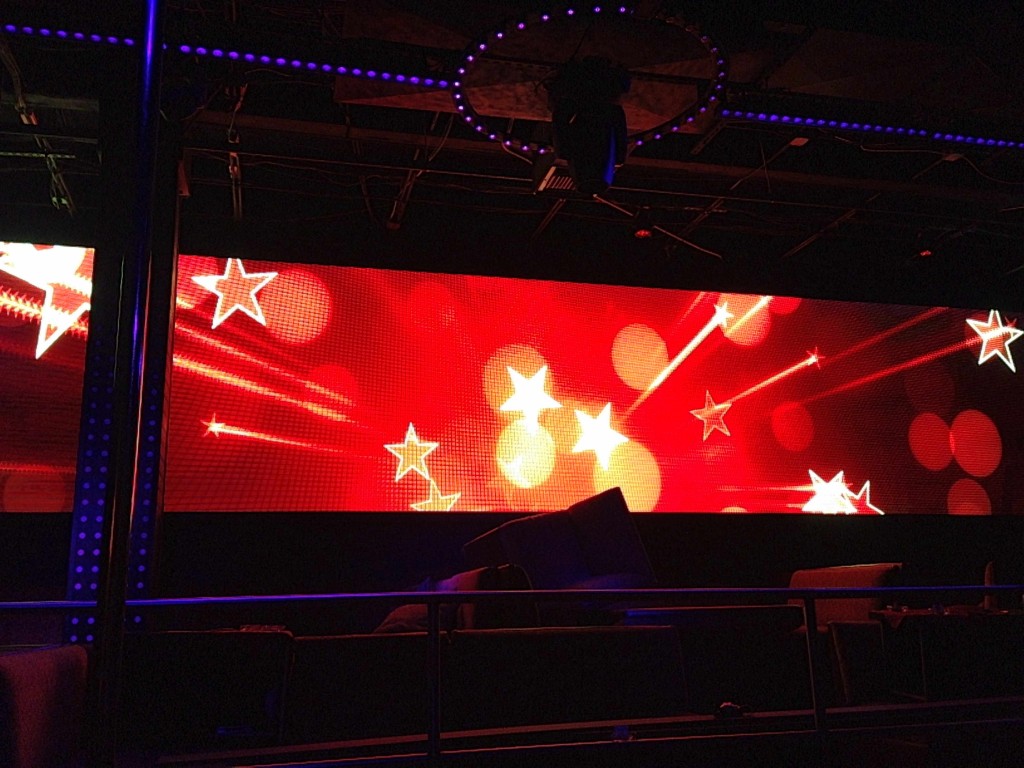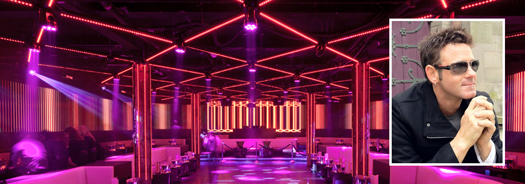Michael Meacham and “Revolutionizing Space” in Club Lighting
Posted on April 30, 2014Soon as you walk into a club, you can always spot a Michael Meacham lighting design. It’s not that the popular LD’s work always has a similar look. On the contrary, what makes Meacham’s designs so special is how each fits its venue like an exquisitely tailored custom suit. That’s no accident. Long before he thinks about lighting, Meacham immerses himself in a club’s structure, allowing its space to define his lighting design, so his design can then redefine its space, creating a uniquely balanced look. Meacham, owner of iDesign Productions in Miami, shared his view of light and space with us. Enjoy!
How did you get started in lighting?
“At a very early age, my friend who lived on the next street was a mobile DJ. I hung out at his house to play with his lighting gear. Then, I bought some of his old gear to build a setup in my bedroom. It’s in my DNA that I was born to do this!”

You’ve done so many great clubs, are there two or three that stand out as the most rewarding creatively?
“Lets see – that’s not an easy question. I feel that I embed myself into every design in different ways that leaves part of my being into each feature or element of my work. Of my recent projects, I would say that E11EVEN in downtown Miami, VIP room in New York, Opera in in DC, Boutiq in Dubai and Noir in Cancun are the ones that stand out creatively.”
Is it different when you design for club in Dubai, Japan or the US? Are there different expectations and preferences in different countries?
“There are some subtle differences among different cultures, but mostly it’s the spirit of the venue itself. I am constantly traveling so I get exposed to all different types of lighting – at trade shows, festivals and live venues all over the world. I’ll incorporate these experiences into my work when designing a new venue. The key to making a design work is being able to understand the client’s vision and expectations more than the geographical location. I believe that a great design, wherever it may be in the world, will be well received regardless of the local culture.”
How has LED technology changed your life designing club lighting?
“It’s made a huge change! This change has all been for the better by opening up limitless creative possibilities. We started iDesign years ago with an emphasis on creative LED design. There are so many things you can do today with LEDs that were never possible with conventional lighting. Right now the market is saturated with RGB LEDs; it’s become ubiquitous in most entertainment design and architectural features.”
So how do you stand out when using RGB LEDs?
“We keep it interesting and fresh by constantly pushing the boundaries of ideas and creativity. We don’t want to be just good – ‘Good is the enemy of great.’ iDesign strives to be great every time.”
Can you talk about how you use Art-Net or Kling-Net and how they’ve changed things for you?
“I use both –usually Art-Net more often than Kling-Net. I use Art-Net mostly for control between GrandMA and media servers. I am, however, currently designing a very heavy video-centric club in Japan that is using mostly Kling-Net to control all the LED walls and lighting via the media server.”
“Many times we are using Art-Net to DMX to control large LED features but this can be expensive and requires our team to spend more time installing. Also when pushing video over DMX the frame rate is lower than Kling-Net. There are pros and cons to each protocol, but in the end it comes down to the design dictating the technology.”

You’ve talked to us before about how you like to use lighting to “revolutionize space,” which we find to be an incredibly cool thought. Can you elaborate on that?
“I love to design around an interesting feature in the space – that one special element of a room or building or club that people talk about after they leave. I love to weave that element into my creative process, but of course, this feature also needs to relate into the rest of the design. Sometimes I want that element to be treated as an obvious noticeable detail, that stands out when it’s illuminated, but also at other times I want it to blend into the landscape, being what I call ‘silently prominent’ in the space. An example would be when I use materials from 3-Form that look just as beautiful when they’re not lit as when we have lighting or video thru them.”
What’s the communication process like when designing for clubs? Who are the people you typically work with?
Usually we get hired by the club owner who gives us complete creative freedom. Sometimes we’ll work with the architect, which is generally an enjoyable collaboration. When I was designing E11EVEN, the design process started very early on, even before the building was built. We had several design meetings with the architect/designer, Tom Telesco Sr., and the club owner, Dennis DeGori. I have to say that some real magic came from these meetings.
“There was an immense exchange of innovative concepts; great ideas were just floating around the room. Dennis would say, ‘I want a hydraulic stage in the round center of the room.’ Tom would add to this idea to a quick sketch, and I would devise the lighting ideas to enhance it. I left these meetings knowing that we were all onto something very special. This venue is one of the most remarkable places that we have had the privilege of participating in creatively.”

Have video panels and pixel mapping changed the way you design?
“Video panels have had a major impact in the way every lighting designer works. I am using this technology not just in entertainment, but in public spaces as well. I just video mapped a huge LED wall lobby feature at Nemours Children Hospital in Orlando, FL, plus a three-story high level atrium of the Chevy Chase Pavilion Mall in DC. By creating and managing all of the content, we know what looks good on a low resolution video wall behind 3-form panels or a large high res 4mm LED wall as its own aspect.”
Is there one area – wall, ceiling, dance floor etc. – that you look at first when creating a lighting design for a club?
I start the design by determining how prominent different components of an area will be when the club is active. This determines how I’m going to proceed with lighting that area. For example, when I am designing a DJ booth feature, when the venue gets busy this DJ booth element may get lost with plenty of people in front of it. If that’s the case, I will use a low resolution detail in that area. . If I have a large unobstructed wall, I may use a higher density LED screen, projection map it or create a unique feature for a substantial impact.”
Generally speaking, what role does lighting play in a club? How do you judge whether or not a club lighting design has been successful?
I believe the lighting has a huge impact in any good club design. But it’s really the sum of all parts. If the sound is lacking or the rest of the club does not have a good flow, then no lighting system can make it better. I have worked on black box designs where it’s just that – a big empty space with a bar and massive production. That model sometimes works but not often. The average club and festival attendee is being introduced to massive amounts of production technology all the time. We are constantly pushing our innovative designs to the limit without being too garish. If we can impress ourselves and walk away happy, I believe that the visual experience will be fantastic for the people going to the venue.”
